
Tobusch Fishhook Cactus
This past weekend I spoke at the Native Plant Society of Texas Spring Symposium about photographing the biodiversity of Texas. The symposium was in Austin, and happened to occur during the blooming period of the Federally Endangered Tobusch Fishhook Cactus (Sclerocactus brevihamatus ssp. tobuschii). Though the cacti do not occur particularly close to Austin, it was the closest we would get for the foreseeable future, so Carolina and I decided we would stay an extra night in the Hill Country and try for the cactus the day after the symposium.
We arrive in Austin on Friday afternoon and took the day to explore the city. While big cities are certainly not my thing, I really enjoyed visiting the Texas State Capitol building. Plumes of Cedar Waxwings danced and buzzed among the many trees that decorated the capitol lawn and the redbuds were just coming into bloom. Inside we marveled at the architecture and artwork, and took in the history of the place.
Saturday we rose early and made our way to the symposium. We thoroughly enjoyed the event. I saw some old friends and met a lot of friendly, interesting people. The symposium was over by 3 or so, so Carolina and I took some time to explore the area. Early spring wildflowers were just coming into bloom and Texas Spiny Lizards (Sceloporus olivaceus) were out basking on the limestone, though they did not take kindly to our approach.
In one of the many tributaries of the Colorado River we spotted a pair of Texas Map Turtles (Graptemys versa). The Texas Map Turtle is one of a number of species of turtles endemic to central Texas. This beautiful, fascinating species is restricted to the Colorado River basin. The females are significantly larger than the males, and each sex has specialized head morphology to utilize different food sources. Males feed primarily on aquatic insect larvae and other invertebrates, while adult females feed primarily on mollusks, shell and all. We spotted the pair basking on some rocks, but the tiny male soon sank into the cool clear water. The female allowed a slow approach as she took in the warmth of an early spring afternoon.
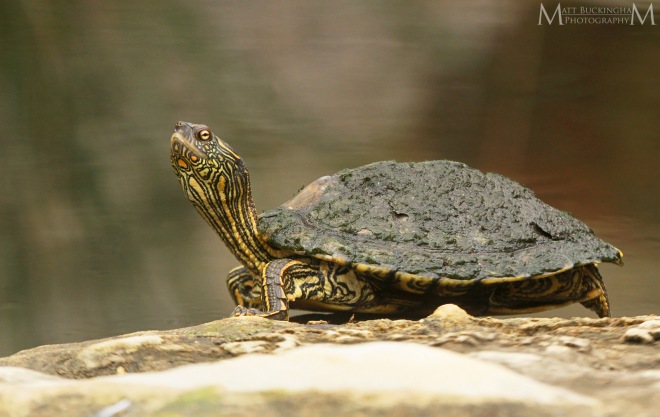
Texas Map Turtle
That evening we made our way to San Antonio. I wanted to show Carolina some of the old Spanish and German architecture of the city, and we would be closer to the cacti. We spent some time exploring downtown, and grabbed a hotel on the outskirts of town. The next morning we slept in. Generally speaking, cacti flowers open midday in order to take advantage of the peak of pollinator activity. Our destination was an hour and a half or so west of the Alamo City. The path took us through the scenic country of the western Edwards Plateau, over oak and juniper hilltops, and down through rocky river valleys, where crystal clear water cut through limestone.
We finally arrived at a Tobusch Fishhook Cactus population that I had access to. We began exploring. It wasn’t long until I spotted the first cactus, and it was in bloom! They were smaller than I had expecting, most being only a few inches across. This cryptic species is extremely difficult to spot when not in bloom. In late winter/early spring, however, they bloom, and their striking, albeit tiny, yellow flowers make them ever so slightly more conspicuous.
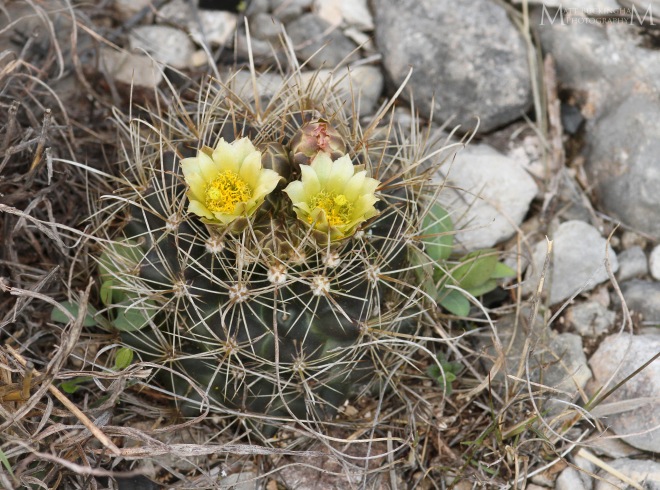
Tobusch Fishhook Cactus
The story of the Tobusch Fishhook Cactus is an interesting one. In the late 1970s there were only four known populations in two Texas counties. In 1978 a flood hit and wiped out half of these populations in one fell swoop. Fearing that S. brevihamatus ssp. tobuschii would soon be lost forever, the government afforded them protection under the Endangered Species Act in 1979, designated them a Federally Endangered Species. At the time that it was listed it was believed to be restricted to limestone ledges and gravelly stream terraces adjacent to streams in just two Texas Counties.
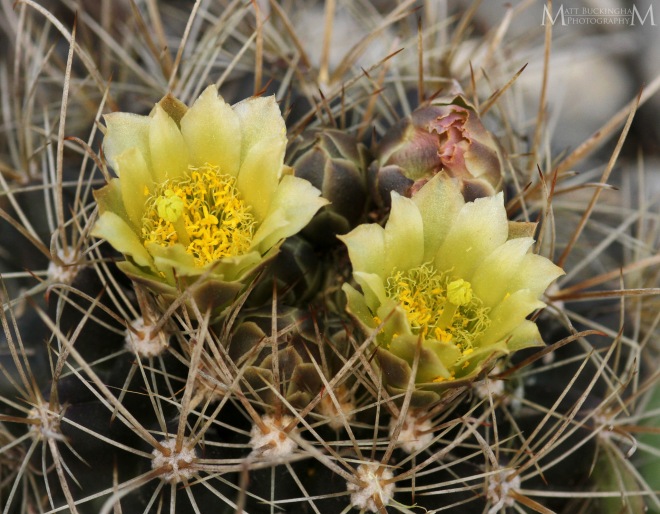
Tobusch Fishhok Cactus Flowers
Once it was listed, survey and conservation efforts were undertaken in earnest. In the following decades several new populations were discovered, including many on protected land. It also became evident that its habitat preferences were not as narrow as previously thought. Today we know that it also occurs in shallow soils over slabs of limestone within clearings within a broader matrix of oak-juniper and oak-juniper-pinyon woodlands. Many of these areas are well away from streams and their associated floodplains and terraces.
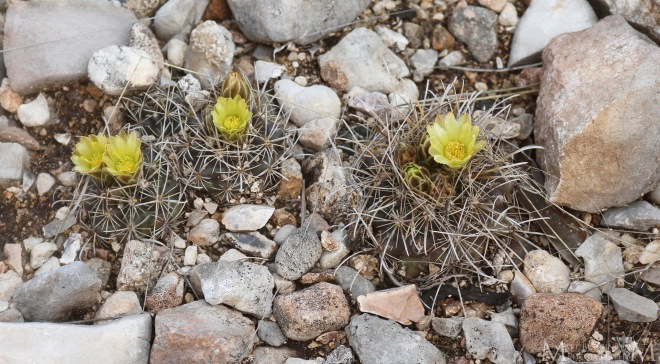
Tobusch Fishhook Cactus
Armed with the knowledge that this diminutive cactus is doing better than previously thought, the US Fish and Wildlife Service proposed to downlist the Tobusch Fishhook Cactus from Endangered to Threatened in December 2016. While this Texas endemic may be more common than initially thought, it still faces very real threats, and a number of historic populations have become extirpated, including the original populations at the time of listing. Even in the face of these threats, today the future for this subspecies looks promising.
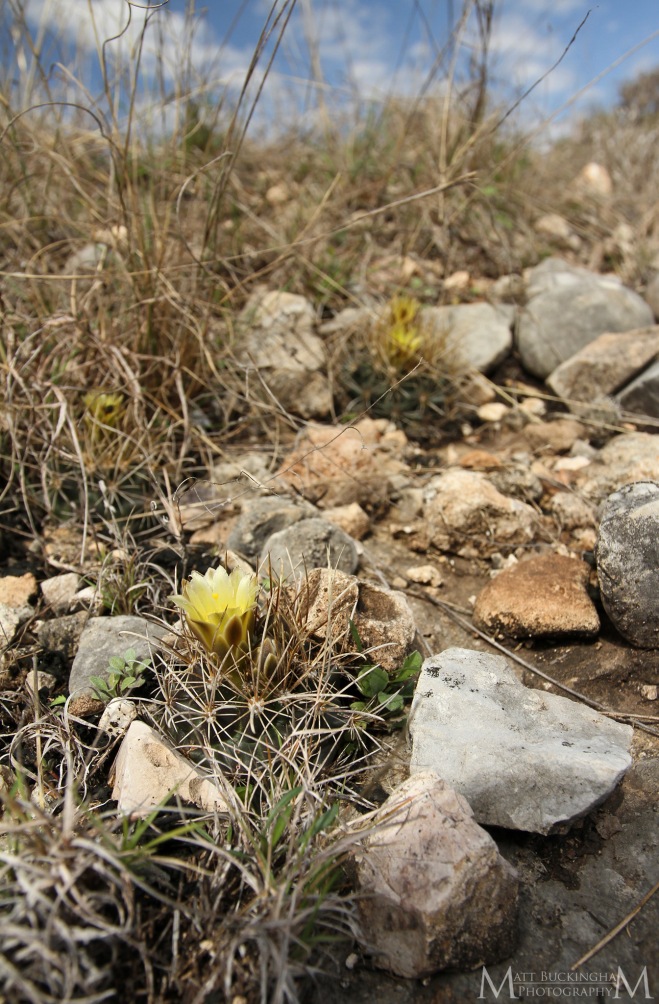
Tobusch Fishhook Cactus
That day we would see many Tobusch Fishhooks, most of them in bloom. In the sunny warmth of that spring afternoon the pollinators were out in force. We watched as a variety of butterflies and bees bounced from flower to flower in search of the sweet nectar within. Perhaps my favorite of these propagators were the metallic green sweat bees (Agopostemon sp.). Their brilliant metallic sheen added the perfect compliment to the greenish yellow blooms of the cacti.
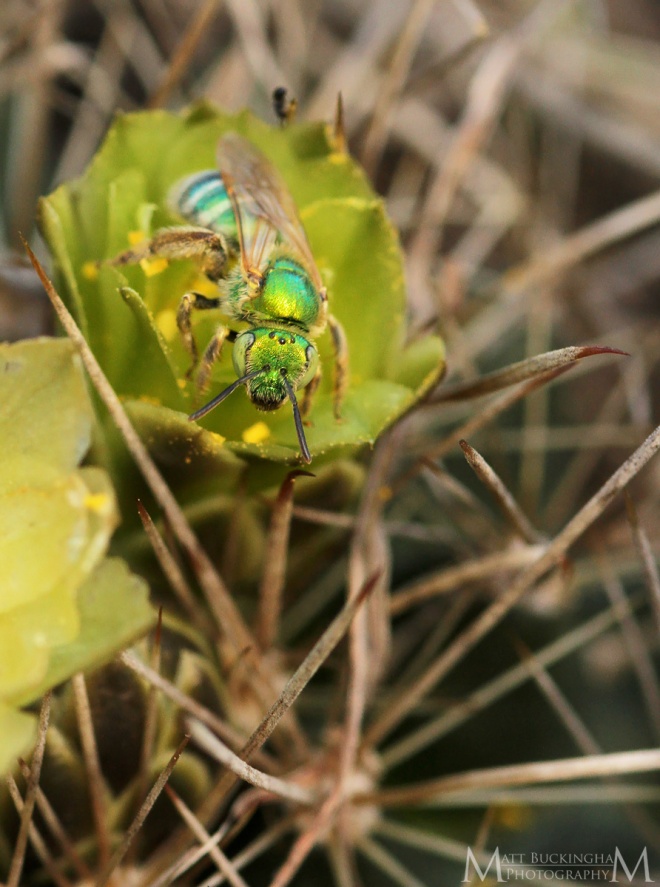
Metallic Sweat Bee
The title of today’s blog comes from my good friend Toby Hibbitts. Many of my friends enjoy a good pun as much as anyone should. Last year after a friend posted a photo of the Tobusch Fishhook Cactus, Toby commented that he had always heard that “a bird in the hand is worth two in Tobusch”. He was undoubtedly, and understandably pleased with himself. I can only hope that this species persists for future generations of cactus lovers, naturalists, pollinators, weevils, and bad pun lovers to enjoy.
